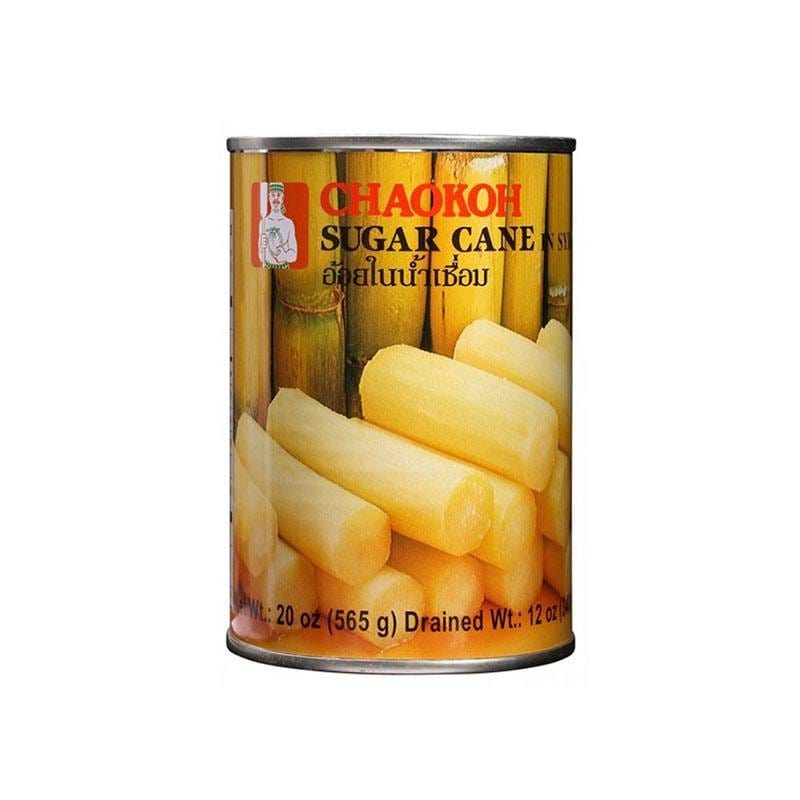What sugar cane products Reveal About Global Farming Shifts
Wiki Article
A Deep Study Sugar Cane: Insights on Production, Material, and Item Growth
Sugar cane plays an important duty in farming, underpinning economies in exotic regions. Its farming entails intricate procedures affected by different environmental variables. Growers face significant difficulties, including environment change and market changes. Advancements in item advancement are arising in response to progressing customer demands. Understanding these characteristics is necessary for grasping the future of this important plant and its influence on worldwide markets. What lies ahead for sugar cane and its myriad applications?The Importance of Sugar Cane in Global Farming
Sugar cane functions as a vital crop in worldwide farming, underpinning economic climates and food systems in several tropical areas. This versatile plant is largely cultivated for its high sucrose material, which is improved right into sugar, a staple active ingredient in numerous food. Past sweetening, sugar cane is additionally essential for producing biofuels, particularly ethanol, adding to energy sustainability.The financial significance of sugar cane includes employment, providing source of incomes for millions of farmers and workers in processing centers. In numerous countries, sugar cane cultivation and processing stand for considerable parts of agricultural GDP, affecting trade balances and regional development.Additionally, sugar cane's adaptability to numerous environments boosts its value as a crop, making certain consistent supply in global markets. Its by-products, consisting of molasses and bagasse, further diversify its energy, making it a crucial element in food, energy, and market. Overall, sugar cane continues to be a foundation of farming efficiency worldwide.Farming Procedures: From Growing to Harvest
Cultivating sugar cane involves a series of well-defined procedures that assure excellent growth and return. The cultivation begins with land prep work, where the dirt is tilled to protect ideal aeration and drain. Following this, seed cane, which includes mature stalks, is chosen and reduced into sectors (sugar cane products). These sectors are after that grown in furrows, ensuring appropriate spacing to enable sunshine and nutrient access.Once planted, irrigation systems are used to keep adequate dampness degrees, as sugar cane grows in humid conditions. Weeding and bug monitoring are necessary throughout the expanding duration to decrease competitors for resources. Nutrient application, including fertilizers, supports durable development. As the plants develop, keeping an eye on for diseases and insects continues.Harvesting typically occurs 10 to 24 months post-planting, depending upon the variety. The walking sticks are reduced short, guaranteeing marginal waste, and are quickly transferred for refining to preserve sugar top qualityGeographic Distribution of Sugar Cane Production
The geographic distribution of sugar cane production is mostly shaped by particular climate and soil demands. Significant producing countries, such as Brazil, India, and China, take advantage of exotic and subtropical climates that support the crop's growth. Comprehending these factors provides insight into the global landscape of sugar cane farming.Significant Making Countries
Although sugar cane is expanded in different regions worldwide, specific countries dominate production due to beneficial environments and agricultural practices. Brazil leads the worldwide market, accounting for around one-third of overall production, many thanks to its extensive vineyards and advanced cultivation strategies. India follows as a substantial producer, benefiting from both favorable climate condition and a huge residential market. China and Thailand likewise rate amongst the top manufacturers, with well-established infrastructures supporting their sugar sectors. Other notable contributors consist of the United States, Mexico, and Australia, each leveraging their distinct agricultural systems to improve output. These nations play a necessary function in the sugar cane supply chain, influencing global costs and scheduleEnvironment and Dirt Needs
Perfect environment and dirt problems are crucial for successful sugar cane production. Sugar cane flourishes in exotic and subtropical regions, requiring cozy temperature levels between 20 ° C and 30 ° C (68 ° F to 86 ° F) These plants need bountiful sunshine and rainfall, ideally between 1,500 to 2,500 millimeters every year, to assure peak growth. The dirt needs to be well-drained, fertile, and abundant in raw material, with a why not try this out pH degree preferably between 5.5 and 8.5. Sandy loam or clay loam dirts are specifically conducive to sugar cane cultivation, offering necessary nutrients and drain. Geographic distribution is mostly influenced by these factors, with major production locations located in Brazil, India, and China, where environmental problems align with the plant's demands for growth and return.
Difficulties Encountered by Sugar Cane Growers
Sugar cane growers run into significant challenges that influence their source of incomes. Climate adjustment presents unpredictable climate patterns, affecting plant yield and high quality. Furthermore, market price volatility develops financial unpredictability, making complex long-term preparation for these farming producers.Environment Modification Impacts

How do environment modification impacts impact the practicality of sugar cane cultivation? Increasing temperatures and unpredictable climate patterns significantly challenge sugar cane growers. Enhanced warmth can result in minimized yields, as the plants battle to thrive in extreme problems. Additionally, transformed rainfall patterns lead to either droughts or extreme flooding, both damaging to crop wellness. Bugs and illness are likely to multiply in warmer environments, better threatening production. Additionally, soil degradation and salinization due to climbing water level can reduce cultivatable land. These weather changes compel cultivators to adapt their techniques, often calling for financial investment in brand-new modern technologies and resistant crop varieties. Ultimately, the sustainability of sugar cane cultivation rests on dealing with these climate tests effectively.

Market Cost Volatility
Market rate volatility offers significant difficulties for sugar cane cultivators, influencing their financial stability and preparation. Fluctuations in market costs, driven by aspects such as worldwide supply and demand, weather, and federal government plans, produce uncertainty for manufacturers. This changability makes it hard for growers to forecast revenues and handle business expenses successfully. Additionally, when rates drop all of a sudden, many farmers may battle to cover production costs, causing prospective economic distress. To reduce these threats, some growers turn to agreements or hedging approaches, yet these options may not be accessible to all. Market price volatility stays a relentless problem, influencing the overall sustainability and success of sugar cane farming.Understanding the Sugar Cane Supply Chain

Market Patterns Affecting Sugar Cane Costs
The dynamics of sugar cane costs are affected by a variety of market patterns that show more comprehensive economic problems and customer actions. Global demand for sugar and sugar-related items plays an important function, with raising interest in organic and sustainably sourced products driving rates higher. Additionally, fluctuations in oil prices affect the expense of production and transportation, more affecting market prices. Climate patterns are another considerable variable; adverse conditions can lead to decreased yields and enhanced rates. Trade policies, tariffs, and global arrangements additionally shape the marketplace landscape, influencing important source supply chains and schedule. Money exchange prices can make complex global profession, influencing prices for both merchants and importers. Shifts in customer choices towards healthier alternatives may modify demand patterns, click here for info developing a surge effect on sugar cane pricing. sugar cane products. For that reason, comprehending these interconnected patterns is important for stakeholders in the sugar marketAdvancements in Sugar Cane Item Advancement
Countless advancements in sugar cane product development are improving the industry and expanding its applications. Researchers are discovering alternative usages beyond typical sugar, consisting of biofuels, biodegradable plastics, and health and wellness supplements. Advances in chemical processing strategies have actually enhanced the removal of important substances such as antioxidants and vitamins from sugar cane, advertising its usage in practical foods.Additionally, the development of genetically changed sugar cane varieties intends to improve return and resistance to pests, while also boosting the nutritional account of the crop. Innovations in fermentation processes have actually led to the production of high-quality liquors originated from sugar cane, attracting a growing market for craft spirits.Moreover, sustainable techniques in growing and handling are acquiring traction, with an emphasis on reducing ecological effects. These improvements not just create brand-new market opportunities yet also promote an even more sustainable strategy to sugar cane production, straightening with worldwide fads towards green products.Often Asked Inquiries
What Are the Environmental Effects of Sugar Cane Farming?
The environmental influences of sugar cane farming include logging, loss of biodiversity, water air pollution from plant foods and chemicals, dirt deterioration, and greenhouse gas exhausts, every one of which significantly add to environmental imbalances and environment modification.
Just How Does Sugar Cane Farming Affect Citizen Economies?
Sugar cane farming significantly affects local economies by producing jobs, stimulating farming sectors, and creating earnings for farmers. It can also lead to financial dependency and changes based on market needs and environmental conditions.What Are the Main Pests and Diseases Affecting Sugar Cane?
The main bugs impacting sugar cane include the sugarcane borer and aphids. Diseases such as red rot and smut considerably effect yield. Farmers should carry out incorporated pest management strategies to minimize these dangers effectively.Exactly How Is Sugar Cane Processed Into Different Products?
Sugar cane handling entails squashing the stalks to extract juice, complied with by clarification, evaporation, and crystallization. This process yields raw sugar, molasses, and ethanol, each serving distinct purposes in different sectors, from food to energy.What Are the Nutritional Aspects of Sugar Cane?
The dietary aspects of sugar cane include vital nutrients, particularly B vitamins, calcium, and iron. It additionally has fiber, though primarily composed of sucrose, which offers power but lacks substantial nutrients.Report this wiki page